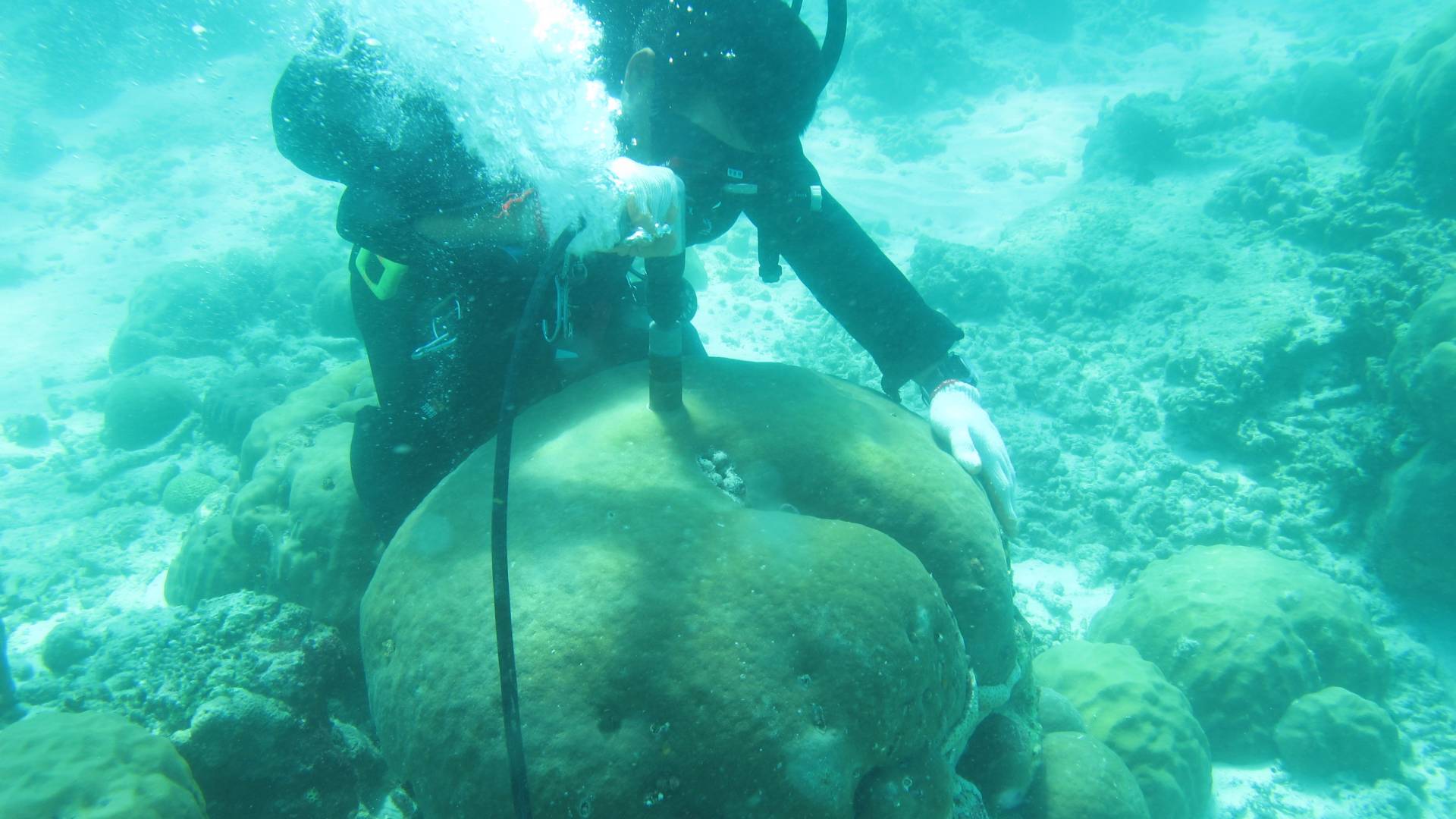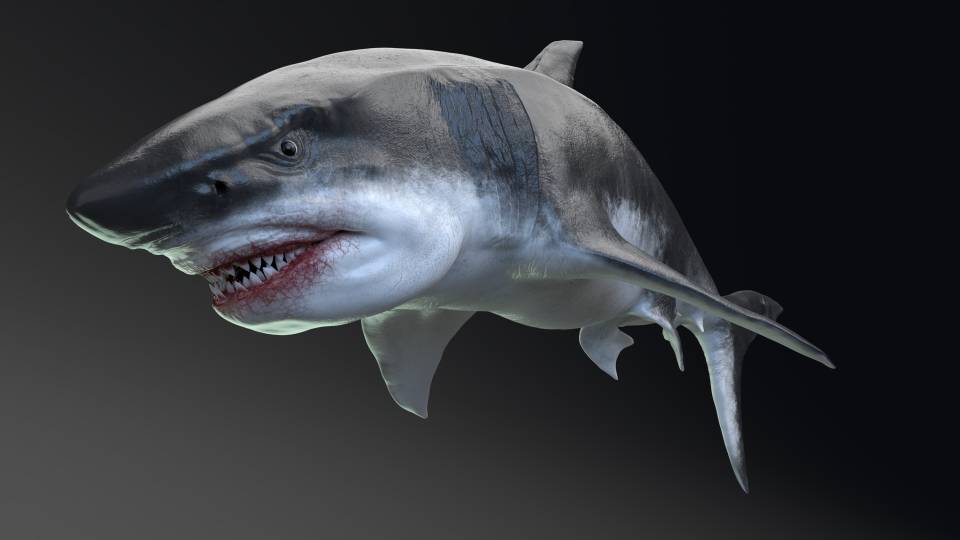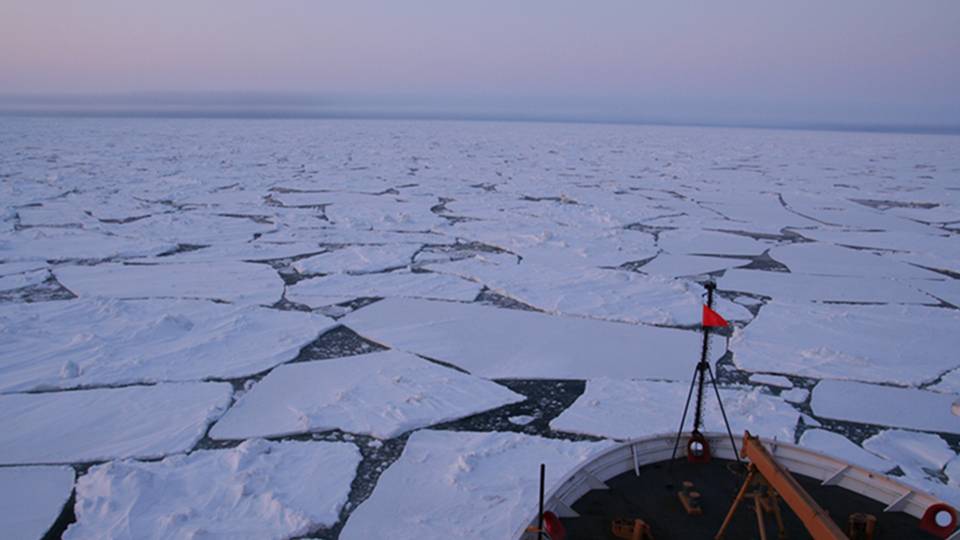New evidence suggests that a nutrient that is both essential to life and an environmental scourge when present in large quantities is also increasing in the open ocean, according to a new study in the journal Science. An international team of researchers, including those from Princeton University, reported an increase in anthropogenic nitrogen deposition, or "fixed" nitrogen in the environment resulting from human activity, in Dongsha Atoll, a coral reef in the South China Sea. Researchers tracked changes in atmospheric nitrogen deposition by measuring the fixed nitrogen contained in the core collected from a living Porites sp., a common large hard coral species.
New evidence suggests that a nutrient that is both essential to life and an environmental scourge when present in large quantities is increasing in the open ocean, according to a new study published May 19 in the journal Science. The increase of this nutrient, known as "fixed" nitrogen, was studied in coral. The findings give researchers new insight into ocean ecosystems, which in turn provides a greater understanding for scientists and policymakers on how they should prioritize human-made threats to Earth's biosphere and climate.
An international team of researchers, including those from Princeton University, reported an increase in anthropogenic nitrogen deposition, or the deposition from the atmosphere of fixed nitrogen, resulting from human activities on Dongsha Atoll. The atoll is a ring-shaped coral reef in the northern South China Sea, about 210 miles from land.
The researchers also reported that their observed measurements are lower than those predicted by atmospheric chemistry models, offering the possibility that improved combustion technology and the adoption of renewable energy sources in the region may be able to curb the nitrogen contamination before it influences open ocean biology significantly.

X-ray images of Porites cores are used to analyze the ratios of two isotopes, or forms, of nitrogen atoms in the coral's calcium-carbonate matrix — nitrogen-14 (14N, the most common variety of the atom, with seven protons and seven neutrons in its nucleus) and nitrogen-15 (15N, which has an extra neutron, making it slightly heavier).
Nitrogen is a nutrient essential to the health of the ocean. Phytoplankton rely on fixed nitrogen to photosynthesize and grow, in turn feeding the entire ecosystem. In nitrogen fixation, nitrogen gas is converted into biologically useful (fixed) forms that are needed by living things. Humans carry out a non-biological form of the reaction to make fertilizer for agriculture. However, too much fixed nitrogen can alter and disrupt natural ecosystems, especially those accustomed to very low levels, such as in the remote tropical ocean and most coral reefs.
Since the early 20th century, human-made fixed nitrogen in the environment has come from two main sources: fertilizer usage and the combustion of fossil fuels. There is evidence that this excess nitrogen pollutes terrestrial ecosystems as well as fresh waters and coastal zones, where it fuels algae blooms that can outcompete other organisms. But it has been difficult to determine the effects, if any, on the open ocean, according to first-author Haojia Ren, who received her Ph.D. in geosciences from Princeton in 2011 and is now an assistant professor at Taiwan National University.
While atmospheric models have predicted an increase in atmospheric nitrogen deposition on the open ocean, "there hasn't been any direct evidence to support these claims," said Ren. "Until the execution of our research."
The researchers tracked changes in atmospheric nitrogen deposition at Dongsha Atoll by measuring the fixed nitrogen contained in the core collected from a living Porites sp., a common large hard coral species. Working in the lab of Daniel Sigman, the Dusenbury Professor of Geological and Geophysical Sciences at Princeton and one of the paper's co-authors, the researchers analyzed the ratio of two isotopes, or forms, of nitrogen atoms trapped within the coral's calcium-carbonate matrix — nitrogen-14 (14N, the most common variety of the atom, with seven protons and seven neutrons in its nucleus) and nitrogen-15 (15N, which has an extra neutron, making it slightly heavier). Their assessment of this ratio revealed a pattern of rising concentrations of atmospheric nitrogen deposition to the open ocean resulting from human activity — up to 20 percent of the total nitrogen supplied each year to surface waters around Dongsha Atoll.
Jonathan Erez, a professor in marine science at the Fredy and Nadine Herrmann Institute of Earth Sciences at the Hebrew University of Jerusalem who is familiar with the research but had no role in it, referred to this method — of examining the nitrogen trapped in the skeletons of coral — as "innovative." He said that the results "provide convincing evidence of the anthropogenic deposition of nitrogen into the ocean from a totally different approach."
Ren and her colleagues also concluded that the rate of atmospheric nitrogen deposition to the South China Sea has been overestimated by the atmospheric models.
"Anthropogenic nitrogen deposition is, perhaps, substantially less severe than has been argued," said Sigman. In other words, the results of this study suggest that atmospheric nitrogen deposition in the open ocean "is not the problem we may need to worry the most about," he said. This is because the data suggest that problem is not yet critical, and there are straightforward technological solutions to limit nitrogen emissions that will likely achieve broader application by East Asian countries in efforts to improve urban air quality. Open ocean coral reefs, for example, are probably much more at risk due to the rise in atmospheric carbon dioxide and global warming that result from fossil fuel burning. In coastal regions, nitrogen contamination is a widely recognized problem, but this is largely due to runoff from land.
"As researchers, we want to be able to identify both those [human impacts on the environment] that are important and those that may be plausible, but just aren't that significant, so that we can do our best to provide guidance to policy," he said. He cautioned that more records using this new approach were needed to test other ocean regions for their rates of atmospheric nitrogen deposition.
Other authors on the paper published May 19 in Science were Yi-Chi Chen of the Department of Geosciences at National Taiwan University; Xingchen Wang and Mira Weigand of the Department of Geosciences at Princeton University; George Wong of the Research Center for Environmental Changes, Academia Sinica and the Department of Ocean, Earth and Atmospheric Sciences at Old Dominion University; Anne Cohen and Thomas DeCarlo of the Department of Geology and Geophysics at Woods Hole Oceanographic Institution; and Horng-Sheng Mii of the Department of Earth Sciences at National Taiwan Normal University.
The research was supported in part by the Ministry of Science and Technology of Taiwan and National Taiwan University, the US National Science Foundation and the Grand Challenges Program of Princeton University.




